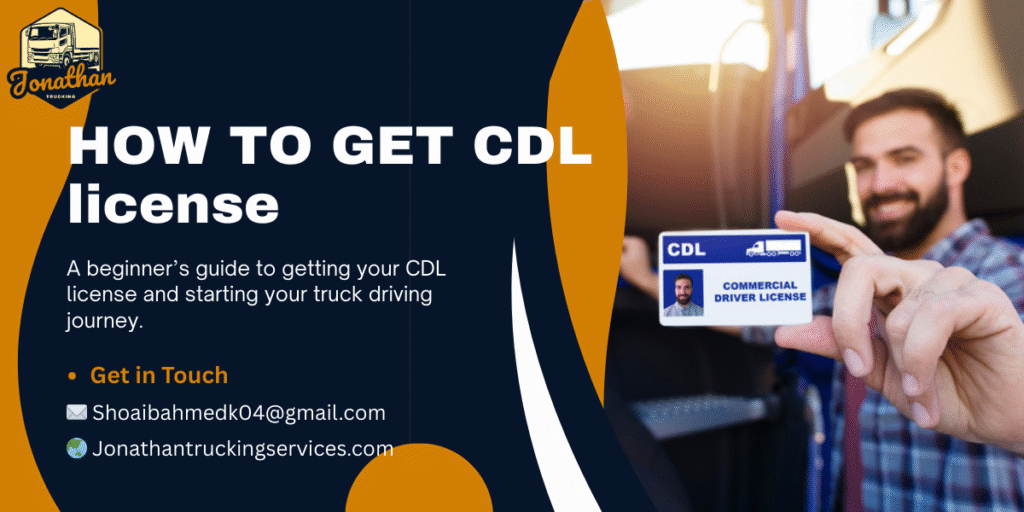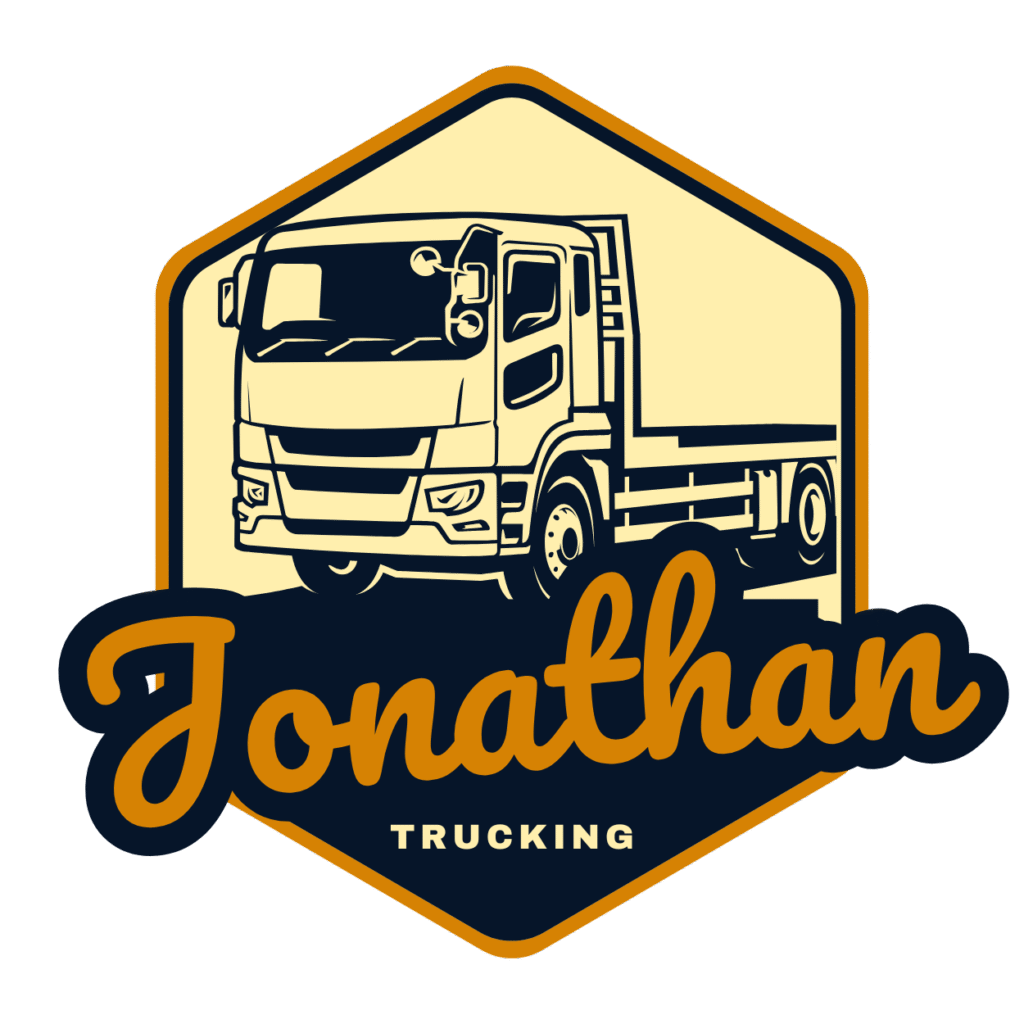
If you’ve ever dreamed of becoming a professional truck driver or operating large commercial vehicles, the first thing you need is a Commercial Driver’s License (CDL). But for beginners, the process can feel overwhelming. Questions like how to get a CDL license, what are the requirements, and how much does it cost are common for those just starting out.
This step-by-step guide breaks down everything you need to know—from eligibility requirements to testing, training, costs, and timelines—so you can confidently begin your journey toward a successful trucking career. Whether you’re thinking about CDL training, how to pass the CDL exam, or the CDL costs, this guide will cover it all!
What Is a CDL License?
A CDL license (Commercial Driver’s License) is a special driver’s license required to operate commercial vehicles such as tractor-trailers, semi-trucks, buses, and other heavy-duty vehicles. Unlike a standard driver’s license, a CDL ensures drivers are trained and qualified to handle the responsibilities and safety regulations associated with larger vehicles. A CDL is essential for anyone wanting to enter the trucking or transportation industry.
There are three main classes of CDLs:
- Class A CDL – For operating combination vehicles (e.g., tractor-trailers, big rigs).
- Class B CDL – For single vehicles over 26,001 pounds (e.g., buses, dump trucks).
- Class C CDL – For vehicles designed to transport 16+ passengers or hazardous materials.
Knowing which CDL class you need is the first step in the process. Choosing the right class depends on the type of vehicle you intend to drive and the nature of your career.
Step-by-Step Guide: How to Get a CDL License
1. Meet the Basic Requirements
Before applying, ensure you meet the federal and state requirements for obtaining a CDL:
- Be at least 18 years old (21 for interstate driving).
- Hold a valid driver’s license.
- Provide proof of U.S. citizenship or legal residency.
- Pass a medical exam by a DOT-certified examiner.
The medical exam is necessary to ensure you are physically fit to handle the demands of driving large commercial vehicles. Additionally, a clean driving record is usually required to ensure that you are eligible for a CDL.
2. Obtain a Commercial Learner’s Permit (CLP)
A Commercial Learner’s Permit (CLP) is like a learner’s permit for commercial driving. To get one, you’ll need to:
- Pass a written knowledge test (general rules, air brakes, endorsements if needed).
- Submit required documents (identity, residency, medical card).
- Pay the state application fee.
Once you have your CLP, you can start practicing driving a commercial vehicle under the supervision of a licensed CDL holder. A CLP is valid for a limited period, usually 180 days, so make sure to use it before it expires.
3. Enroll in CDL Training
Although not always legally required, CDL training schools provide professional instruction and significantly increase your chances of passing the road test. Training typically covers:
- Pre-trip inspections.
- Vehicle control basics.
- Highway and city driving.
- Backing and parking maneuvers.
- Safety regulations and logbook rules.
Many trucking companies offer sponsored CDL training programs, where your tuition is covered in exchange for a work commitment after you get your CDL. This can significantly reduce upfront costs and get you started on your career right after passing the CDL exam.
While CDL training isn’t mandatory, it’s highly recommended. It gives you hands-on experience with a commercial vehicle and prepares you for the practical challenges you’ll face on the road. The cost of CDL school can range between $3,000 and $7,000, depending on your location and the program.
4. Take the CDL Skills Test
After completing CDL training and holding your CLP for the required period (usually 14 days), you can schedule your CDL skills test. This test has three parts:
- Pre-trip inspection – Demonstrate knowledge of your vehicle’s systems (lights, brakes, tires, etc.).
- Basic control skills – Perform maneuvers such as backing up, parking, and turning.
- Road test – Drive in real traffic conditions, following traffic laws and safety rules.
Passing this CDL exam is the final step to receiving your CDL license. You’ll need to pass all three parts of the test before you can officially get your CDL. Many drivers find that taking a few practice runs with an instructor before the test can help ensure success.
5. Endorsements (Optional but Valuable)
Certain jobs may require additional endorsements on your CDL. These endorsements show that you’re qualified to handle certain types of vehicles or cargo. Common CDL endorsements include:
- H – Hazardous materials.
- N – Tank vehicles.
- P – Passenger transport.
- S – School bus.
- T – Double/triple trailers.
Adding endorsements to your CDL can increase job opportunities and improve earning potential. For example, a hazardous materials endorsement (H) can open the door to jobs transporting dangerous goods, which often pay more. Keep in mind that these endorsements require additional testing, which may have an associated fee.
How Much Does It Cost to Get a CDL License?
One of the most common questions is how much does it cost to get a CDL license? The total cost can vary depending on your state, training program, and the endorsements you’re seeking. Here’s a breakdown of typical costs:
- Commercial Learner’s Permit (CLP): $30–$60
- CDL Application & Testing Fees: $40–$200
- Medical Exam: $75–$150
- CDL Training School: $3,000–$7,000
- Endorsement Tests: $10–$50 each
In total, you can expect to invest between $3,500 and $8,000 to get fully licensed. However, many trucking companies offer tuition reimbursement or free training in exchange for a work contract, significantly reducing your out-of-pocket expenses.
How Long Does It Take to Get a CDL License?
Another big concern is how long does it take to get a CDL license? The answer depends on your training program, scheduling availability, and whether you’re going full-time or part-time. On average, here’s the timeline:
- CLP Waiting Period: Most states require you to hold your CLP for at least 14 days before testing.
- CDL Training Programs: Full-time programs take 3–7 weeks, while part-time programs may take several months.
- Endorsement Preparation: Adding endorsements may extend the process slightly.
On average, most new drivers can earn their CDL in about 1 to 3 months.
Truck License vs. CDL License
Some beginners wonder about the difference between how to get a truck license and how to get a CDL license. In most cases, they refer to the same process—since driving commercial trucks requires a CDL.
- A standard driver’s license (sometimes called a truck license in casual terms) allows operation of personal pickup trucks or smaller vehicles.
- A CDL license is mandatory for larger commercial trucks and professional trucking jobs.
So, if you’re planning a career as a truck driver, you’ll need to follow the full CDL process outlined above.
Tips for Passing Your CDL Exams on the First Try
Preparing for the CDL exam can feel intimidating, but with the right approach, you can pass on your first try. Here are some helpful tips:
- Study the CDL Manual – Every state provides a CDL handbook that outlines all the material you’ll need to know.
- Take Practice Tests – Use online CDL practice tests to prepare for the written exam.
- Get Hands-On Practice – Spend as much time behind the wheel with a licensed instructor as possible.
- Focus on Safety Rules – DOT regulations, logbooks, and weight limits are heavily tested.
- Stay Calm During Testing – Nervousness can lead to mistakes, so practice until you’re confident.
Why Getting a CDL Is Worth It
Earning your CDL is more than just a license—it’s an entry ticket into one of the most in-demand industries in the U.S. Truck drivers play a vital role in keeping the economy moving. The career comes with:
- High demand and job security.
- Competitive pay and benefits.
- Travel opportunities across the country.
- Pathways for advancement (owner-operator, specialized hauling).
Final Thoughts
Now that you know how to get a CDL license, the next step is to take action. From meeting basic requirements to completing training and passing exams, the process takes dedication but opens the door to rewarding career opportunities.
Whether you’re asking how to get a truck license for the first time or you’re ready to commit to a full CDL program, the journey is achievable with the right preparation and mindset.
With the right approach, you’ll soon be on the road as a licensed commercial driver—fueling your future one mile at a time. 🚚💨
